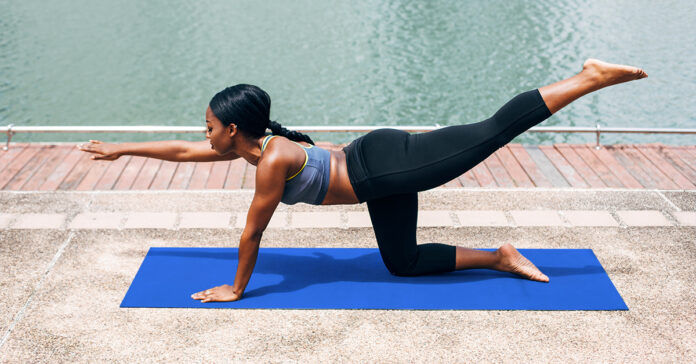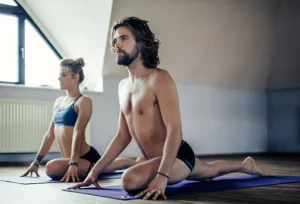How Quickly Can Yoga Change Your Body?
The type of yoga that you do will have less impact on your body than the consistency of movement. You should start with a beginner’s class and gradually increase your yoga practice. The goal is to increase your blood flow to the muscles and reduce your risk of falls. You should be able to see noticeable results in as little as three to four weeks.
Gradual progression
Yoga is a body-mind practice that can progress in many directions. It is essential to assess your progress so you can set goals that are realistic and maintain motivation. Gradual progression can be achieved in a number of ways, but the most effective method is to test yourself frequently. A regular test helps you understand your progress and can help you to set goals for the future.
The next step in your progression is to improve your body awareness. You can do this by practicing at home or in a public group class. The goal is to build your body’s awareness and develop your ability to notice subtle cues. These cues are called drishti, and they help you develop a deeper understanding of your body.
When practicing yoga, you can simplify or modify almost any pose. It is beneficial to start with a basic variation of a pose and progress slowly to more complex variations. As you progress, you can increase the difficulty of a pose while keeping track of your progress. You will be able to tell if you are improving, or if you should be focusing on a specific pose.
Different styles of yoga focus on different aspects of the eight limb system. Iyengar yoga, for example, focuses on correct posture. It was developed by Indian yoga teacher B. K. S. Iyengar, and uses props to support your body while you practice. For a more relaxing experience, you can try gentle/restorative yoga. Gentle yoga often involves more stretching than strength exercises, making it a good option for those with limited mobility.
In addition to slowing down, you should also engage your muscles to do the work necessary for holding a pose. This is important to ensure proper posture and avoid injuries. This is a crucial part of strengthening and developing your body. In the right sequence, your body will be able to adapt to a higher load without stress or injury.
Yoga has many benefits for the mind and body. It has become an increasingly popular exercise for fitness enthusiasts. It helps build good habits, promotes self-inquiry, and makes us more conscious of our actions and decisions. It is also beneficial to the nervous system.
Increased blood flow to the muscles
One of the benefits of yoga is increased blood flow to the muscles. It is known that yoga helps the circulatory system by flushing out carbon dioxide and toxins in the body. It also improves your cardiorespiratory and psychologic profiles. One of the most popular poses in yoga is the downward dog. This pose requires you to start on all fours and press your hands into the floor to get into a downward dog.
In a study conducted by Bharshankar et al., the cardiovascular system of 100 participants aged over 40 years, both sexes, was assessed after five months of yoga practice. The study group had a lower heart rate than the control group and the difference was statistically significant. The authors also noted a significant improvement in the participants’ blood pressure.
The cardiovascular system must compete for the oxygen and nutrients it needs to maintain a healthy level of blood flow. Blood flow to skeletal muscles is essential to blood pressure regulation. The higher the blood flow to the muscles, the more oxygen the heart can deliver to the muscle cells. Therefore, blood flow to the muscles is essential for maintaining proper health and performance.
Improved balance
Physical yoga has been shown to improve balance in older adults. The effectiveness of this intervention has not been tested in clinical trials, but it may help those with age-related balance problems. Although yoga is a relatively new practice, it is already proving to be helpful for older adults. The benefits of yoga include improved physical mobility and improved balance.
Researchers conducted a review of 15 studies that focused on yoga and balance. The primary objective of the review was to find evidence of a possible effect of yoga on balance. The researchers included studies that used various methods and measurements. The researchers also assessed the quality of the reporting. The results of the reviews suggest that yoga has some effects on balance, but the results are limited by the different quality of these studies.
While yoga may not be as effective as balance training, it can help protect people from falls or injuries. In addition, it doesn’t require any equipment. Beginners should focus on breathing and not take yoga too seriously. Ideally, they should practice a balance sequence at least three times a week.
In addition to the study’s methodology, the authors used a comprehensive review of major electronic databases to identify studies published before June 2012. They searched computerized bibliographic databases such as PubMed and manually reviewed reference lists of relevant articles to find additional studies. Despite the limitations, the study concluded that yoga improved balance in young school boys.
Improving your balance is important in all types of movement. It helps you avoid falls, maintain good posture, and move efficiently. You should practice yoga to improve your balance. A balanced body is essential for athletic training. It also helps prevent injuries and improves overall health. It is a skill that anyone can learn.
A systematic review of 15 studies found that yoga does improve balance. However, the research focused on healthy participants only. Older people with co-morbidities may experience a different benefit.
Reduced risk of falls
Reduced risk of falls with yoga is a topic that may benefit older adults in need of balance training. Yoga is a holistic approach to healthy ageing and can improve the status of people with diabetes and hypertension. This study aims to provide practical information on the effectiveness of yoga for older adults and its effects on falls.
Falls are one of the leading causes of death and injury among older people. They are also the most common reason for hospital trauma admissions. It is estimated that 30% of people over 65 experience falls on a yearly basis. By age 80, the number increases to 50%. Participants in this study were on average 70 years old, and had experienced 27 falls over the preceding six months. Those who completed the program saw a significant decrease in their falls.
The findings from this study are promising, and suggest that yoga may be an effective fall prevention strategy. The researchers found that participants who practiced Iyengar yoga experienced improvements in their gait, balance, and fear of falling. Although these results are preliminary, they provide guidance for future research. This study may serve as a model for evaluating the efficacy of yoga as a fall prevention strategy in other countries.
One recent study, conducted at the University of Wisconsin in Madison, found that the regular practice of yoga can reduce the risk of falls and other serious injuries in older adults. The study involved 38 participants, who had an average age of 70, and who attended biweekly yoga classes for eight weeks. After the intervention, the participants’ fall rates dropped 48 percent.













